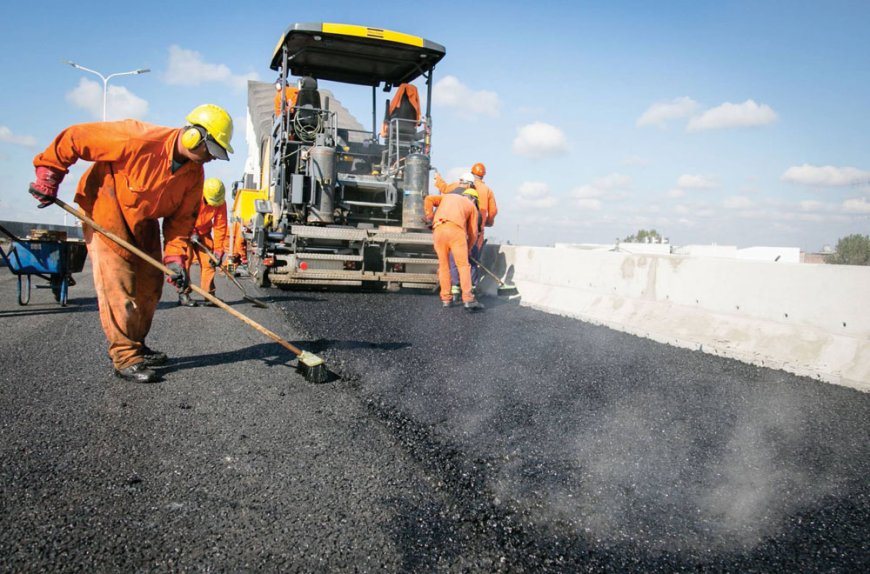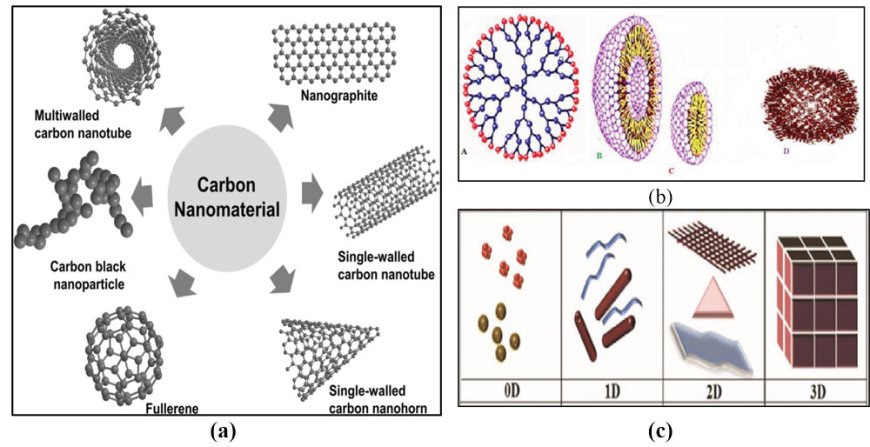How NANO TECHNOLOGY can change the ASPHALT INDUSTRY?

Asphalt is a widely used material in the construction and maintenance of flexible pavements due to its favourable properties, including flexibility, waterproofing, and durability. However, traditional asphalt mixtures often face challenges such as aging, cracking, deformation, and reduced performance under heavy traffic loads and extreme weather conditions. To overcome these limitations, researchers have turned to modifying asphalt using different additive materials. These additives, which improve the physical and mechanical properties of binder and asphalt mixtures, include fibers, polymers, and nanomaterials (NM). This article explores the various types of nanomaterials used in asphalt, their benefits, and their impact on asphalt performance.
Why modification of asphalt is needed?
The increased traffic volumes, larger and heavier trucks, and higher tire pressures result in increased severity of the condition upon the pavement system, resulting in rutting, stripping and fatigue cracking. In addition to this, the various events associated with climate change affect the selection and specifications of pavement materials and ultimately
affecting the pavement performance.
The modification of bitumen binders with nanomaterials is essential because it significantly enhances their properties. Nanomaterials, such as nano-clays, nano-silica, carbon nanotubes, and graphene, are incorporated into bitumen to improve its performance. Due to its small particle size and high surface area, these nanomaterials increase the strength and durability of bitumen, making pavements more resistant to wear and tear. They also improve fatigue resistance, reducing cracking under repeated loading, which is vital for high-traffic roads.
Additionally, nanomaterials enhance the thermal properties of bitumen, providing better stability at high temperatures
to prevent rutting and
improved performance at low temperatures to reduce thermal cracking. Moreover, these modifications enhance the
aging resistance of bitumen by making it more resistant to oxidation and UV radiation, thereby extending the pavement’s lifespan and maintaining its quality over time.
Nano-silica can fill the microscopic voids in asphalt, creating a denser and more cohesive material. This reduces the susceptibility of asphalt to water damage and oxidative aging, two primary factors contributing to pavement deterioration.
Improvement in Rutting and Fatigue Resistance
The incorporation of nanomaterials in asphalt binders has shown promising results in enhancing rutting and fatigue resistance. The Multiple Stress Creep Recovery (MSCR) test and the Linear Amplitude Sweep (LAS) test, essential for evaluating these properties, indicate that Nano modified asphalts exhibit superior performance compared to traditional binders.
Carbon nanotubes, for instance, increase the stiffness and elasticity of asphalt binders, providing better resistance to the stresses imposed by heavy traffic loads. This leads to pavements that can endure higher loads without significant deformation, ultimately extending their service life. Many authors studied the use of various Nano materials in bitumen binder.
Self Healing Properties
An inventive method for extending the lifespan and durability of asphalt pavements is the use of nanomaterials in self-healing bitumen. Bitumen is enhanced in its ability to heal itself by the addition of nanomaterials, including graphene oxide, silica nanoparticles, carbon nanotubes (CNTs), and nano clays. Bitumen is better able to redistribute heat and re-bond at the molecular level when cracks form because of these nano materials that increases the thermal conductivity, mechanical strength, and viscoelastic qualities. This improvement makes it easier for bitumen to heal naturally and seal voids and cracks more successfully, prolonging the life of asphalt surfaces and lowering maintenance expenses.
Environmental Benefits
Nanotechnology also offers environmental benefits by contributing to more sustainable asphalt production and usage. The use of nanomaterials can lower the required temperature for asphalt mixing and compaction, reducing energy consumption and greenhouse gas emissions. Additionally, Nano-enhanced asphalt can incorporate recycled materials more effectively, promoting the reuse of waste products and reducing the demand for virgin resources.
How nanotechnology works?
The bulk material’s physical characteristics are significantly altered by the interaction of the nanoparticles with conventional materials. Because the nanomaterials have highly reactive isolated sites, they can alter the bulk material’s electrical properties, changing its physical characteristics. In order to create nanocomposites, it is necessary to comprehend how fundamental changes in physical properties can be used to modify the materials’ properties. Because the following characteristics do not exist in a macro environment, nanomaterials differ from macro materials in these respects.
(i) Interfacial or surface effects
(ii) Effect of scale
(iii) Quantum effect due to changed electronic structure
Nanomaterials for road sector

The Fig. 1 shows various types of Nano materials. Nano materials are characterized based on origin (natural and artificial) i.e., Natural Nano material - nanomaterial developed through mechanical, (bio)geochemical, or other natural processes; it has no direct or indirect link to anthropogenic activity or processes. Engineered/artificial nanomaterials - A nanomaterial conceived, designed, and intentionally produced by humans.
Based on structural configuration (organic, inorganic, metal based, metal oxide based and carbon based) – Carbon-based nanomaterials are materials composed primarily of carbon atoms with structural features at the nanometer scale (1 to 100 nanometers). (Mekuye & Abera, 2023) [Fig.1 (a)]. Organic materials produced mostly of organic matter (Dong & Hu, 2013), Organic nanomaterials can also be broken down naturally (Alshammari et al., 2023). Some examples of organic nanomaterials or polymers are liposomes, dendrimers, micelles, and ferritin shown in Fig.1 (b).
Based on number of dimension (0,1,2,3 – dimensional) [Fig. 1 (c)]. 0 dimensional - Materials with all of their dimensions contained within the nanoscale—that is, with no dimension larger than 100 nm—are known as zero-dimensional nanostructures.
1 dimensional - This class of nanomaterials has one dimension of the nanostructure that is outside the non-metric range (>10 nm), while two of the three dimensions (x, y) are in the nanoscale range.
2 dimensional - 2D nanomaterials have plate-like shapes with two dimensions outside the nanometer range, but 1D (x) is at the nanoscale (between 1 and 100 nm).
3 dimensional - Three-dimensional nanomaterials are materials that are not limited to the nanoscale in any dimension or range of dimensions.
Table 1 provides a brief summary of the different nanomaterials used in road construction.
Laboratory Characterization of nanomaterials for pavement applications
A thorough testing and characterization is necessary for a comprehensive understanding of the properties and behavior of different nanomaterials for pavement applications. The properties of nanomaterials depend on their particle size, shape, surface area and surface chemistry.
Different characterization techniques such as Scanning Electron Microscopy (SEM), Energy Disruptive X-day (EDX), Transmission Electron Microscopy (TEM), X-Ray Diffraction (XRD), Fourier Transform Infrared (FTIR) spectroscopy can be employed to analyze the particle size, shape, surface morphology, structure and chemical composition of nanomaterials.
In addition to this, the rheological properties are characterized using a Dynamic Shear Rheometer (DSR) and a Bending Beam Rheometer (BBR). This helps in understanding the viscoelastic properties of nanomaterials modified asphalt.
Table 1: Summary of the nanomaterials used in Road Construction (Adapted from S. Imnoi et al. 2023)
|
Nano material |
Application in road construction |
Properties |
Performance |
|
Carbon black |
Asphalt modification |
Good dispersibility, high surface area, small particle size |
Improved UV stability, increased stiffness |
|
Carbon nanotubes |
Reinforcement of asphalt and concrete |
High aspect ratio, high tensile strength, good thermal and electrical conductivity |
Improved mechanical properties, enhanced durability, reduced cracking and rutting, self healing |
|
Graphene |
Reinforcement of asphalt and concrete |
High tensile strength, high aspect ratio, good thermal and electrical conductivity |
Improved mechanical properties, enhanced durability, reduced cracking and rutting. |
|
Nano alumina |
Asphalt modification |
Small particle size, high surface area, good dispersibility |
Improved stability, increased stiffness, reduced rutting, self healing |
|
Nano cellulose fibers |
Asphalt and concrete modification |
High aspect ratio, good dispersibility, low density |
Improved mechanical properties, reduced cracking, enhanced durability |
|
Nano clay |
Asphalt modification |
High surface area, good dispersibility |
Improved stability, increased stiffness, reduced rutting, self healing |
|
Nano iron oxide |
Asphalt modification |
Small particle size, high surface area, |
Improved stability, increased stiffness, reduced rutting |
|
Nano silica |
Cement and concrete modification |
High surface area, small particle size, pozzolanic properties |
Increased strength, reduced permeability, improved workability, self healing |
|
Nano titanium dioxide |
Asphalt modification |
High surface area, photocatalytic properties |
Improved degradation of pollutants, increased brightness and reflectivity |

Dr. Abhishek Mittal
Principal Scientist, CSIR - CRRI,
New Delhi and Associate Professor
AcSIR, Ghaziabad

Ms. Sameeksha Panthi
Research Scholar, Academy
of Scientific and Innovation
Research (AcSIR), Ghaziabad








